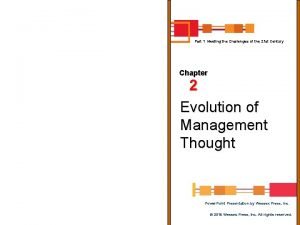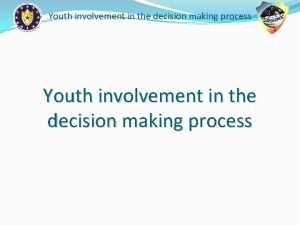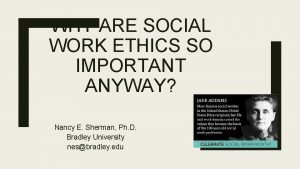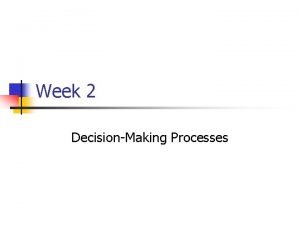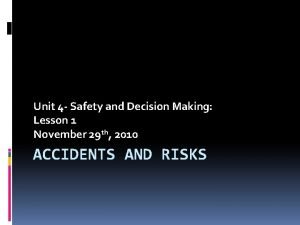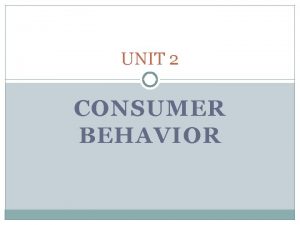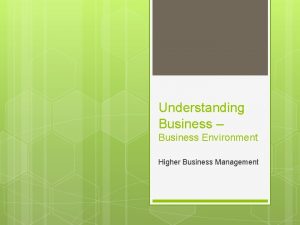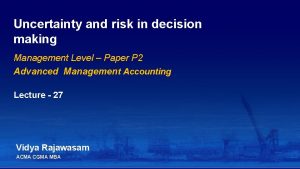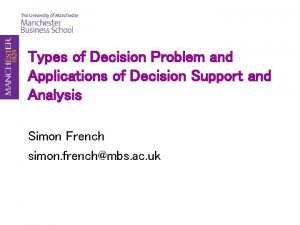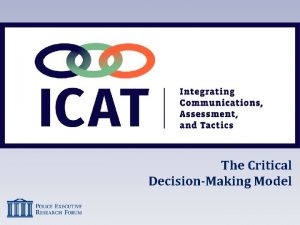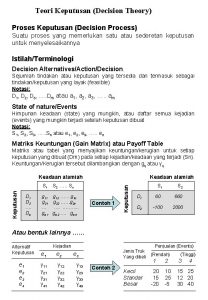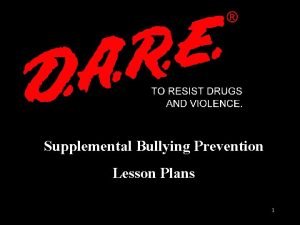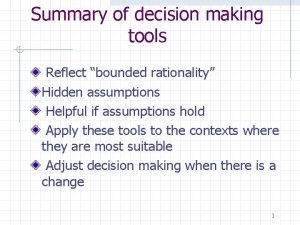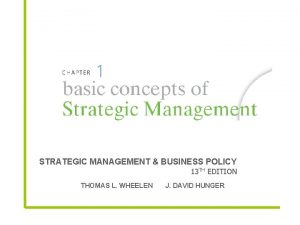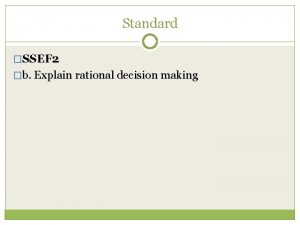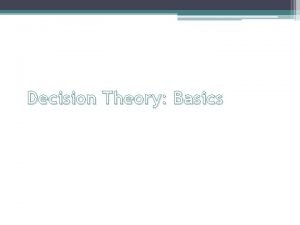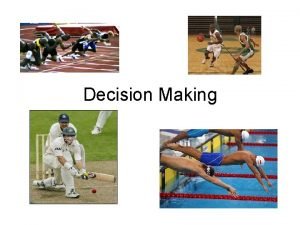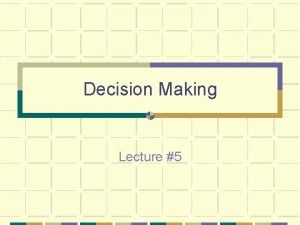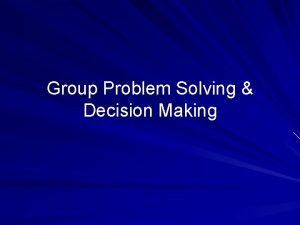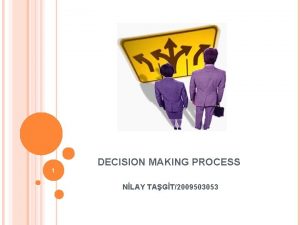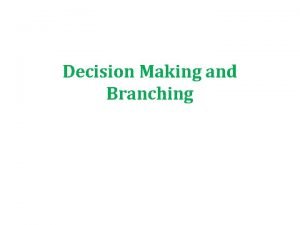Decision Theory A general approach to decision making




































- Slides: 36

Decision Theory • A general approach to decision making that is suitable to a wide range of operations management decisions – Capacity planning – Product and service design – Equipment selection – Location planning 2021/2/21 1

Developing and Using Payoff Tables Establishing the procedure to follow Construct the Payoff table Decision-making under certainty Decision-making under complete uncertainty Decision-making under risk Maximin Approach Maximax Approach Minimax regret Approach Insufficient Reason Approach Expected Monetary Value (EMV) Approach Expected Opportunity Loss (EOL) Approach 2021/2/21 Expected Value of Perfect Information (EVPI) Approach 2

FIVE STEPS TO DEVELOP PAYOFF TABLE v. List all the alternatives. v. List the future consequences of each alternative. v. Identify the payoffs associated with each combination. v. Assess the degree of certainty that these combinations will materialize v. Decide on a decision criterion. 2021/2/21 3

Characteristics of Suitable Problems • Characteristics of decisions that are suitable for using decision theory – A set of possible future conditions that will have a bearing on the results of the decision – A list of alternatives from which to choose – A known payoff for each alternative under each possible future condition 2021/2/21 4

Causes of Poor Decisions • Decisions occasionally turn out poorly due to unforeseeable circumstances; however, this is not the norm. • More frequently poor decisions are the result of a combination of – Mistakes in the decision process – Bounded rationality – Suboptimization 2021/2/21 5

Bounded Rationality & Suboptimization • Bounded rationality – The limitations on decision making caused by costs, human abilities, time, technology, and availability of information • Suboptimization – The results of different departments each attempting to reach a solution that is optimum for that department 2021/2/21 6

Decision Environments • There are three general environment categories: – Certainty • Environment in which relevant parameters have known values – Risk • Environment in which certain future events have probable outcomes – Uncertainty • Environment in which it is impossible to assess the likelihood of various future events 2021/2/21 7

Decision Making Under Uncertainty • Decisions are sometimes made under complete uncertainty: No information is available on how likely the various states of nature are. • Decision Criteria: – Maximin • Choose the alternative with the best of the worst possible payoffs – Maximax • Choose the alternative with the best possible payoff – Laplace • Choose the alternative with the best average payoff – Minimax regret • Choose the alternative that has the least of the worst regrets 2021/2/21 8

Example – Payoff Table Possible Future Demand Alternatives Low Moderate High Small Facility $10 $10 7 12 12 (4) 2 16 Medium Facility Large Facility • A decision is being made concerning which size facility should be constructed • The present value (in millions) for each alternative under each state of nature is expressed in the body of the above payoff table 2021/2/21 9

Example – Maximin Criterion Possible Future Demand Alternatives Low Moderate High Small Facility $10 $10 7 12 12 (4) 2 16 Medium Facility Large Facility • The worst payoff for each alternative is Small facility: $10 million Medium facility $7 million Large facility -$4 million • Choose to construct a small facility 2021/2/21 10

Example – Maximax Criterion Possible Future Demand Alternatives Low Moderate High Small Facility $10 $10 7 12 12 (4) 2 16 Medium Facility Large Facility • The best payoff for each alternative is Small facility: $10 million Medium facility $12 million Large facility $16 million • Choose to construct a large facility 2021/2/21 11

Example – Laplace Criterion Possible Future Demand Alternatives Low Moderate High Small Facility $10 $10 7 12 12 (4) 2 16 Medium Facility Large Facility • The average payoff for each alternative is Small facility: (10+10+10)/3 = $10 million Medium facility (7+12+12)/3 = $10. 33 million Large facility (-4+2+16)/3 = $4. 67 million • Choose to construct a medium facility 2021/2/21 12

Example – Minimax Regret Possible Future Demand Alternatives Low Moderate High Small Facility $10 $10 7 12 12 (4) 2 16 Medium Facility Large Facility • Construct a regret (or opportunity loss) table • The difference between a given payoff and the best payoff for a state of nature Regrets Alternatives 2021/2/21 Low Moderate High Small Facility $0 $2 $6 Medium Facility 3 0 4 Large Facility 14 10 0 13

Example – Minimax Regrets Alternatives Low Moderate High Small Facility $0 $2 $6 Medium Facility 3 0 4 Large Facility 14 10 0 • Identify the worst regret for each alternative • Small facility $6 million • Medium facility $4 million • Large facility $14 million • Select the alternative with the minimum of the maximum regrets • Build a medium facility 2021/2/21 14

Decision Making Under Risk • Decisions made under the condition that the probability of occurrence for each state of nature can be estimated • A widely applied criterion is expected monetary value (EMV) – EMV • Determine the expected payoff of each alternative, and choose the alternative that has the best expected payoff – This approach is most appropriate when the decision maker is neither risk averse nor risk seeking 2021/2/21 15

Example– EMV Possible Future Demand Alternatives Small Facility Medium Facility Large Facility Low (. 30) Moderate (. 50) High (. 20) $10 $10 7 12 12 (4) 2 16 EMVsmall =. 30(10) +. 50(10) +. 20(10) = 10 EMVmedium =. 30(7) +. 50(12) +. 20(12) = 10. 5 EMVlarge =. 30(-4) +. 50(2) +. 20(16) = $3 Build a medium facility 2021/2/21 16

Decision Tree • Decision tree – A schematic representation of the available alternatives and their possible consequences – Useful for analyzing sequential decisions 2021/2/21 17

Decision Tree – Composed of • Nodes – Decisions – represented by square nodes – Chance events – represented by circular nodes • Branches – Alternatives– branches leaving a square node – Chance events– branches leaving a circular node – Analyze from right to left • For each decision, choose the alternative that will yield the greatest return • If chance events follow a decision, choose the alternative that has the highest expected monetary value (or lowest expected cost) 2021/2/21 18

Format of a Decision Tree 2021/2/21 19

Example– Decision Tree • A manager must decide on the size of a video arcade to construct. The manager has narrowed the choices to two: large or small. Information has been collected on payoffs, and a decision tree has been constructed. Analyze the decision tree and determine which initial alternative (build small or build large) should be chosen in order to maximize expected monetary value. mand w De (. 40) $40 High Dema ing $40 Do nd (. 6 2 0) Overtime Bu nd 1 Bu ). 40 ( d ild n ma e rg La e w. D 2 ing Do Noth Cut Lo High 2021/2/21 th No Exp a ild Sm all Lo Dem and (. 60) $70 Pric es $50 $55 ($10) $50 20

Example– Decision Tree ) 0 nd (. 4 a m e w. D $40 High ing $40 Do Dema nd (. 6 0) 2 th No Overtime Exp a d Sm all Lo Bu il nd ing Do Noth 1 Bu ). 40 ( d 2 ild an e rg La em w. D Cut Lo High Dem and (. 60) Pric es $50 $55 ($10) $50 $70 EVSmall =. 40(40) +. 60(55) = $49 EVLarge =. 40(50) +. 60(70) = $62 2021/2/21 Build the large facility 21

Expected Value of Perfect Information • Expected value of perfect information (EVPI) – The difference between the expected payoff with perfect information and the expected payoff under risk – Two methods for calculating EVPI • EVPI = expected payoff under certainty – expected payoff under risk • EVPI = minimum expected regret 2021/2/21 22

Example – EVPI Possible Future Demand Alternatives Small Facility Medium Facility Large Facility • • • 2021/2/21 Low (. 30) Moderate (. 50) High (. 20) $10 $10 7 12 12 (4) 2 16 EVwith perfect information =. 30(10) +. 50(12) +. 20(16) = $12. 2 EMV = $10. 5 EVPI = EVwith perfect information – EMV = $12. 2 – 10. 5 = $1. 7 You would be willing to spend up to $1. 7 million to obtain perfect information 23

Example– EVPI Regrets Alternatives Low (. 30) Moderate (. 50) High (. 20) Small Facility $0 $2 $6 Medium Facility 3 0 4 Large Facility 14 10 0 • Expected Opportunity Loss • EOLSmall =. 30(0) +. 50(2) +. 20(6) = $2. 2 • EOLMedium =. 30(3) +. 50(0) +. 20(4) = $1. 7 • EOLLarge =. 30(14) +. 50(10) +. 20(0) = $9. 2 • The minimum EOL is associated with the building the medium size facility. This is equal to the EVPI, $1. 7 million 2021/2/21 24

Sensitivity Analysis • Sensitivity analysis – Determining the range of probability for which an alternative has the best expected payoff 2021/2/21 25

Risk attitude • Risk avoider • Risk neutral • Risk lover (seeker) 2021/2/21 26

Risk averse: • a preference for a sure outcome over a gamble that has higher or equal expectation 2021/2/21 27

Risk seeking: • the rejection of a sure thing in favor of a gamble of lower or equal expectation 2021/2/21 28

Example of Risk attitude • A person is given the choice between two scenarios, one with a guaranteed payoff and one without. In the guaranteed scenario, the person receives $50. In the uncertain scenario, a coin is flipped to decide whether the person receives $100 or nothing. • The expected payoff for both scenarios is $50, meaning that an individual who was insensitive to risk would not care whether they took the guaranteed payment or the gamble. However, individuals may have different risk attitudes. A person is said to be: 2021/2/21 29

A person is said to be: • risk-averse (or risk-avoiding) - if he or she would accept a certain payment (certainty equivalent) of less than $50 (for example, $40), rather than taking the gamble and possibly receiving nothing. • risk-neutral - if he or she is indifferent between the bet and a certain $50 payment. • risk-loving (or risk-seeking) - if he or she would accept the bet even when the guaranteed payment is more than $50 (for example, $60). 2021/2/21 30

Utility function of a risk-averse (risk-avoiding) individual 2021/2/21 31

Utility function of a risk-neutral individual 2021/2/21 32

Utility function of a risk-loving (risk-seeking) individual. 2021/2/21 33

Notation/Abbreviation • CE - Certainty equivalent; E(U(W)) - Expected value of the utility (expected utility) of the uncertain payment; E(W) - Expected value of the uncertain payment; U(CE) - Utility of the certainty equivalent; U(E(W)) - Utility of the expected value of the uncertain payment; U(W 0) - Utility of the minimal payment; U(W 1) - Utility of the maximal payment; W 0 - Minimal payment; W 1 Maximal payment; RP - Risk premium 2021/2/21 34

Imagine that you face the following pair of decisions: • A: a sure gain of $240 • B: 25% chance to gain $1000 and 75% chance to gain nothing Which of the two choices would you favor? 2021/2/21 35

(cont’d) • C: a sure loss of $750 • D: 75% chance to lose $1000 and 25% chance to lose nothing Which of the two choices would you favor? 2021/2/21 36
 Decision making approach
Decision making approach No decision snap decision responsible decision
No decision snap decision responsible decision Financial decision
Financial decision Pengambilan keputusan menurut simon
Pengambilan keputusan menurut simon What is inferring
What is inferring War making and state making as organized crime summary
War making and state making as organized crime summary Virtual circuit switching example
Virtual circuit switching example Theoretical models of counseling
Theoretical models of counseling Michael treacy and fred wiersema
Michael treacy and fred wiersema Multiple approach-avoidance conflict
Multiple approach-avoidance conflict Cognitive approach vs behavioral approach
Cognitive approach vs behavioral approach Process of research definition
Process of research definition Traditional approach in system analysis and design
Traditional approach in system analysis and design Deep learning approach and surface learning approach
Deep learning approach and surface learning approach Involvement decision making
Involvement decision making Social work code of ethics
Social work code of ethics Systematic decision making process
Systematic decision making process What doing our country
What doing our country Mamdm
Mamdm Using recursion in models and decision making sheet 3
Using recursion in models and decision making sheet 3 Paced decision making
Paced decision making Unit 4 lesson 1 decision making
Unit 4 lesson 1 decision making Decision making unit example
Decision making unit example Types of decision making
Types of decision making Internal factors higher business
Internal factors higher business Contribution payoff table
Contribution payoff table Types of decision making
Types of decision making Nature of marketing
Nature of marketing Critical decision making model
Critical decision making model Decision theory adalah
Decision theory adalah Tactical decision making adalah
Tactical decision making adalah What is the dare decision making model
What is the dare decision making model Rational decision making model
Rational decision making model Mintzberg's modes of strategic decision making
Mintzberg's modes of strategic decision making Paced decision making
Paced decision making Chapter 6 prices and decision making assessment answers
Chapter 6 prices and decision making assessment answers Conditions of decision making
Conditions of decision making
